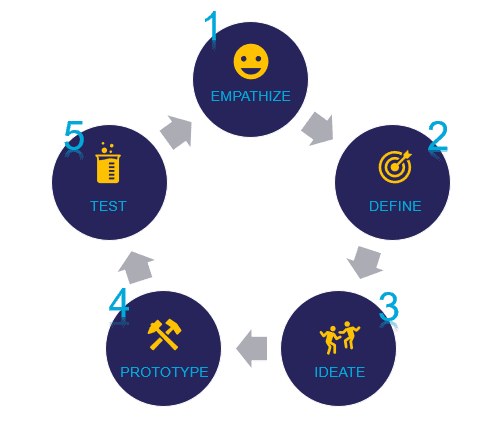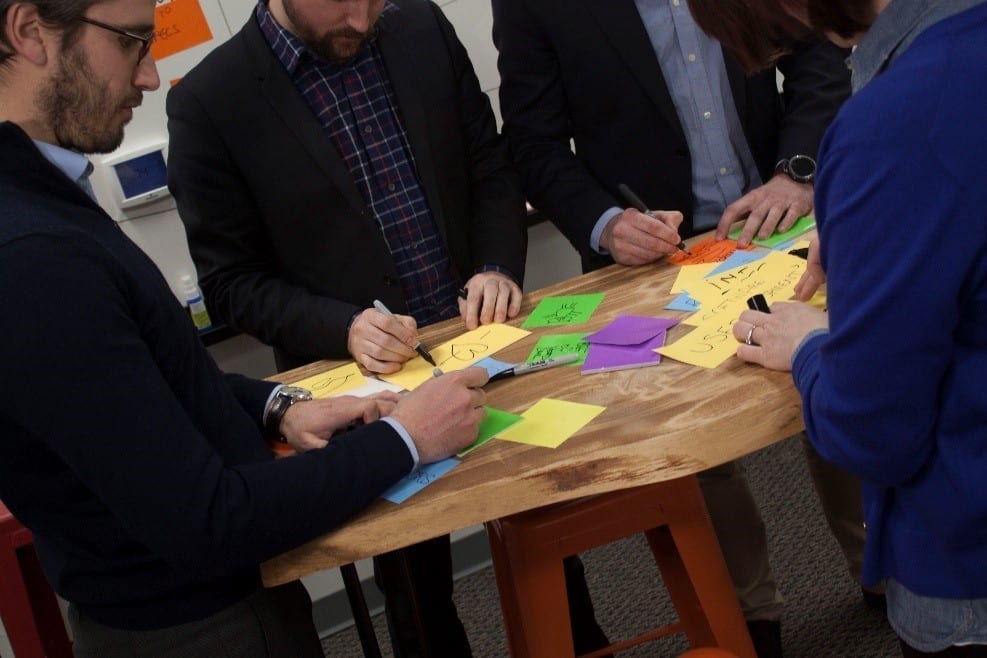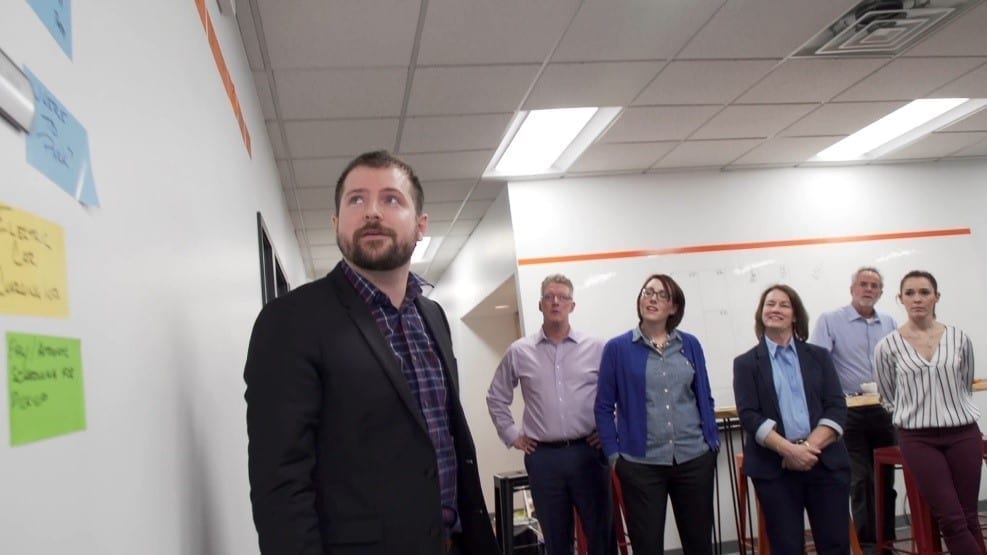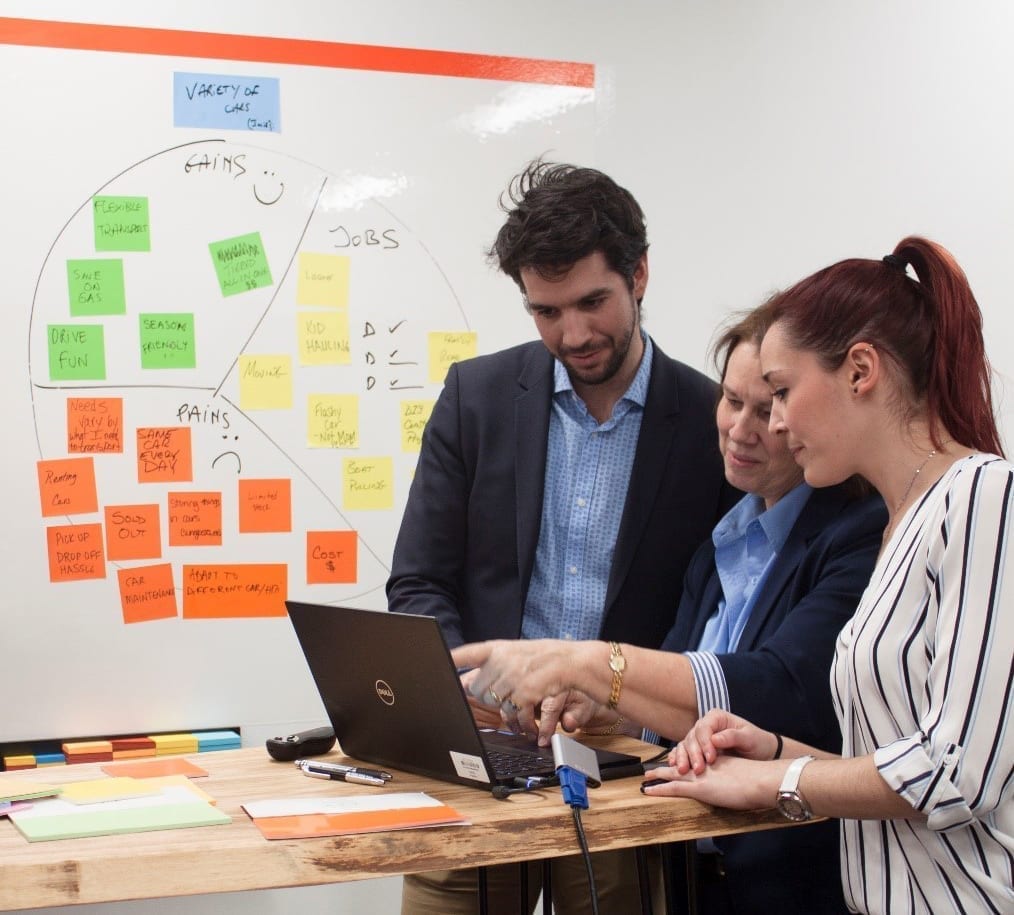Our website is not supported on this browser
The browser you are using (Internet Explorer) cannot display our content.
Please come back on a more recent browser to have the best experience possible

When it comes to developing new products and services or even driving new processes that bring efficiency to the workplace; employees across many organizations are encouraged to use creativity and logic as vehicles to explore more possibilities. For many of these organizations, gone are the days where solutions were designed or implemented without first being exposed to an iterative user input process.
What this means is that, solutions are designed and implemented first and foremost with the end-user in mind. Information about the end-user’s needs and desires are gathered and validated throughout the process, ensuring the best outcome possible.
Unfortunately, most organizations that aren’t aligned with end user mindset still fall into the trap of forgetting the importance of User Experience; designing and implementing solutions later perceived as unfriendly and non-intuitive.
Learn more about Design Thinking with Breanna, Senior Consultant with MIGSO-PCUBED :
“Design Thinking teaches you to stop and really empathize with the people that you are trying to solve a problem for. Once you understand their perspective and you can walk in their shoes, you can come about with a better solution”
In this context, ‘user-friendliness’ can make or break the adoption of these solutions within an organization. While common, it is most certainly an avoidable mistake.
While it’s true that in most cases it isn’t up to a project team to decide what solution gets designed or implemented, it is in the team’s interest to ensure project sponsors, and other key decision-makers are aware of the role user experience plays in the success of the solution.
Project Leads and Scrum Masters can no longer be quiet servant leaders waiting to manage the next system implementation.
They must strive to make user experience and system adoption part of the project’s guiding principles and metrics for project success.
Incorporating Innovation Frameworks such as Design Thinking, into the Project Management practice, can be valuable regardless of the project management methodology(ies) being used.
Although there are several definitions and variations of Design Thinking, it is commonly defined as “a human-centered methodology that draws from the designer’s toolkit to integrate the needs of people, the possibilities of technology, and the requirements for business success”.
What distinguishes Design Thinking from other more traditional problem-solving techniques, is that it seeks to dissect a problem beyond the obvious, by challenging any idea or perspective that doesn’t align to the user needs.
For an organization that wants to innovate around system implementation, or explore new concepts, products or services, project teams can challenge assumptions through a series of creative processes in the Design Thinking Framework, beginning with developing a deeper understanding of the given problem.
Solutions are then identified and vetted against one or multiple subjects, generally referred to as personas. These personas are fictional archetypal users whose goals and characteristics represent the needs of the end-user or client.

Great frameworks are often simple, and the Design Thinking Framework above is indeed simple. Each phase takes teams through a series of creative and analytical exercises which then can become part of the project’s deliverables.
Since Design Thinking is inherently an iterative process, each phase can and should be repeated until the team is satisfied with the results and is ready to move forward with developing and implementing a full-scale solution. Project teams can also tailor the framework based on the challenges they are trying to solve, and leveraging individual phases as they see it fit.
When it comes to delivering innovation in the workplace, many organizations host an Innovation Day and invite their employees to explore existing strategic themes or areas where they need to solve specific challenges.

In this context, adopting Design Thinking can be a valuable tool not only for teams to identify and validate ideas, but also to carry them through their full execution. As part of these initiatives, teams are normally asked to pick a topic or focus on a specific technology sometimes related to an existing strategic theme.
Focusing on the Design Thinking framework and the scenario above, the team begins to evaluate the user’s needs and desires through direct observation and by putting themselves in the user’s shoes, called the Empathize Phase.
They may choose to develop a persona first if access to real users is not available. The idea is for the team to really think empathetically about the user and analyze the potential use case closely, while carefully evaluating how they could benefit from using the solution.
If the idea or topic the team has in mind doesn’t align with the user needs, it’s probably a good idea to reconsider the topic. Since this is the foundation of all subsequent work, it is really important to spend extra time here as needed.
After developing a thorough understanding of the user needs and having a pretty good understanding of what the use case is, the team can proceed to develop a problem statement. This is the Define Phase.
The problem statement will allow the team to clearly define and stay focused on what it is that needs to be solved throughout the initiative. Another way to look at the problem statement is that it is essentially a distilled version of a project’s key objectives, all in a few sentences. When writing the problem statement, take into consideration that it should be broad, actionable and user-focused.
After developing an understanding of the user needs and the problem statement has been written, it is time to be creative and generate as many ideas as possible. Keep adding to the board until patterns begin to emerge, then narrow it down.
Correlate these ideas to the problem statement and discard what’s isn’t applicable. Begin asking broader questions and while avoiding what’s seamlessly obvious. For example, buy a software or develop it in-house? Brainstorming to come up with as many ideas as possible is crucial, while never eliminating the option to go back to the previous phase to re-frame the problem statement.
There can be multiple solutions, keep them in sight in case there is a need to evaluate other options.

After completing the first 3 phases of the Design Thinking Framework, the team is now ready to pitch their idea to the judges. This is the time for the team to present their findings and explain their case as to why their idea is worth funding / executing. Assuming they’ve done a good job, and their idea is selected to move to the next round, the team can proceed to begin planning the next phases in the Design Thinking framework: Prototype and Test.

The prototype phase can be a demo of the solution or the approach needed to meet the user’s needs. Depending on the technology or approach selected, the team can put into practice how the idea will solve the problem statement.
Considering product demos if the solution is already in the market can be effective. However, if the idea requires building a solution in-house, developing a minimal viable product or even some wire-frames can also be very effective. It really comes down to time and resources.
The prototype should be tested, and assumptions validated to confirm the viability of the solution being proposed. Determine if the prototype meets all user needs stated in the problem statement and take note of any gaps. Is the solution close to ideal? Does it require changes? If so, how could the team improve the solution? If time is not an issue, consider expanding the prototype phase by exploring other alternatives. It is not uncommon for teams to go through each phase multiple times.
The Design Thinking framework can be applied to virtually any industry, and the basic principles can be leveraged by any organization to explore new initiatives and take a user-centered approach when it comes to designing or implementing new systems.
Many of these principles can be integrated within the Scaled Agile Framework and with Engineering or Business Agility methods emphasizing delivering the best value in the shortest viable time, decentralizing decision-making, and driving relentless improvement. Still have questions on how to use Human Centered Design in your Project Management practice, contact us.
Read more: Lean Framework for Accelerated Innovation
This article was written
by Gustavo Moreno and Taylor Huston
Loved what you just read?
Let's stay in touch.
No spam, only great things to read in our newsletter.
We combine our expertise with a fine knowledge of the industry to deliver high-value project management services.
MIGSO-PCUBED is part of the ALTEN group.
Find us around the world
Australia – Canada – France – Germany – Italy – Mexico – The Netherlands – Portugal – Romania – South East Asia – Spain – Switzerland – United Kingdom – United States
© 2024 MIGSO-PCUBED. All rights reserved | Legal information | Privacy Policy | Cookie Settings | Intranet
Perfect jobs also result from great environments : the team, its culture and energy.
So tell us more about you : who you are, your project, your ambitions,
and let’s find your next step together.
Dear candidates, please note that you will only be contacted via email from the following domain: migso-pcubed.com. Please remain vigilant and ensure that you interact exclusively with our official websites. The MIGSO-PCUBED Team
Choose your language
Our website is not supported on this browser
The browser you are using (Internet Explorer) cannot display our content.
Please come back on a more recent browser to have the best experience possible
